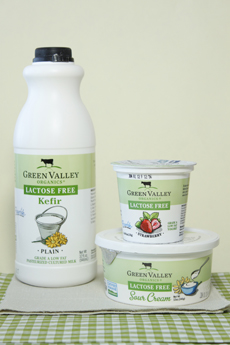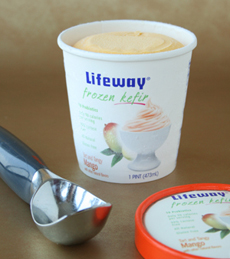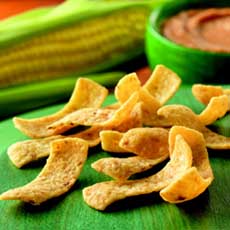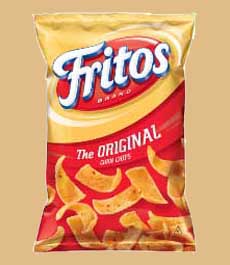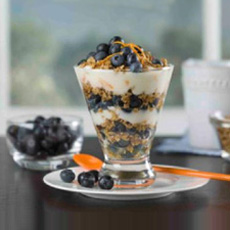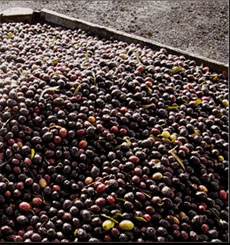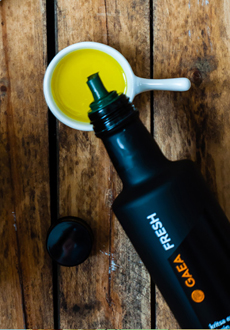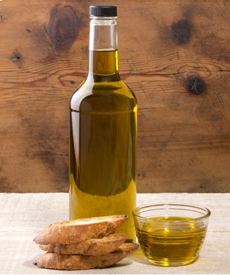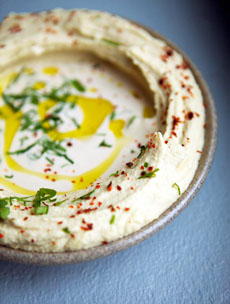
[1] Hummus, lightly garnished at Shaya | New Orleans (photos #1 and #2 © Shaya).

[2] Hummus with sophisticated garnishing at Shaya.

[3] Hummus on a sandwich from EatWellEnjoyLife.com (photo © Eat Well Joy Of Life.

[4] Hummus flatbread with arugula, at The Purple Carrot (photo © The Purple Carrot).
|
|
Hummus, a dip and spread made from chickpeas, has been eaten for millennia: Chickpeas and the sesame seeds used to make tahini were among man’s first cultivated crops.
Hummus has long been served in every Greek and Middle Eastern restaurant in the U.S. But following its endorsement by nutritionists as a healthful snack and better-for-you dip, the once-niche product’s sales have grown dramatically in the U.S., following the trajectory of another food from its neck of the woods, Greek yogurt. Unlike yogurt, hummus is accessible to lactose-intolerant and vegan customers and is a pareve ingredient for kosher diets.
Smaller brands like Abraham’s and Yorgo’s have been around for 30 years or more. But Sabra, another modest brand begun 30 years ago, had the good fortune to be purchased by Israeli food giant, Strauss Group, in 2006. Strauss, in turn, sold a 50% interest to Pepsico in 2008.
Rancho Gordo’s hummus recipe is below.
BEYOND CLASSIC (PLAIN) HUMMUS
With the best marketing clout of any hummus in the world—from distribution, advertising, and promotion to endorsements such as becoming the NFL’s Official Dip [whatever that means]—Sabra had the resources not only to become the top seller in the hummus category, but one of the top healthful snacks and dips in the U.S. It also had the ability to make more consumers seek flavored hummus, an explosive category that is very American.
Sales of the refrigerated flavored spreads alone, a category dominated by hummus, grew 21% in 2015 to almost $700 million. [Source: IRI]. And oh, the flavors! New ones seem to appear monthly to keep customers interested, often as limited editions that may then become permanent parts of the line.
Tribe Hummus, our personal favorite, has done an exemplary job of turning hummus into a fun food beyond a plain spread. Consider these flavors:
Everything (one of our favorites, like an “everything” bagel), Fiery Sriracha, Forty Spices, Garlic, Harvest Carrot, Lemon Rosemary Focaccia, Mediterranean Olive, Mediterranean Style, Spicy Red Pepper, Sweet Roasted Red Peppers, Vine Ripened Tomato & Basil and Zesty Spice & Garlic, among others.
Tribe’s latest limited edition is Ranch, which provides amazing ranch flavor in what is a dairy-free spread (authentic ranch dressing has a base of buttermilk).
Other brands have featured beet, cilantro chimichurri, edamame, guacamole, horseradish, kalamata olive, lemongrass chili, pumpkin, sundried tomato, Thai chili and spinach artichoke hummus flavors. The lesson is: If you like a particular flavor, try stirring it into hummus.
IT’S EASY TO MAKE HUMMUS AT HOME
We can go through an eight-ounce container of hummus in a day. Our friend Jerry teased us because he has been making hummus in his food processor for 20 years—for a lot less than it costs to buy it.
We also listened to Steve Sando of RanchoGordo.com, who sells the world’s great heirloom beans and legumes (check out his retail store when you’re in San Francisco or Napa Valley—you’ll buy many pounds’ worth). Canned chickpeas are not even in his vocabulary.
“You may think I am biased,” says Steve, “but first and foremost, you need to start with good, recent-crop garbanzos. You can use the dusty old bag [of dried chickpeas] you picked up at the supermarket or you can use ours. They cook quickly, they have a fresh, almost nutty flavor and you don’t need to rinse them the way you must with canned beans.
“I understand that some people want to soak the beans, others don’t. Some salt up front, some brine, some salt later. Whatever makes you happy and inspires you to make [it] is what works for me—except for one thing: baking soda.
“Many recipes call for a pinch or more of baking soda to help soften the garbanzos. Only if your beans are old, or if you live in the desert where beans age very quickly, may this be a good idea.”
|
CANNED VS. DRIED CHICKPEAS
Canned chickpeas are more convenient to buy and faster to work with. But they are canned in salt and don’t have the same “fresh” flavor as dried chickpeas.
Dried chickpeas have better flavor and texture, which is especially noticeable in plain (unflavored) hummus.
RECIPE: RANCHO GORDO HOMEMADE HUMMUS
Fresh garbanzos (chickpeas) make the best-tasting hummus, but if you can’t get them or don’t have the extra time to cook them, default to the best canned brand. Canned chickpeas need to be rinsed to remove the salt solution.
Ingredients
1/2 pound fresh garbanzos (chickpeas)
1/4 onion, sliced
1 bay leaf
6 tablespoons tahini
Juice of 1 lemon
3 cloves garlic, minced
Salt, to taste
Garnish: extra virgin olive oil
Garnish: smoked Spanish paprika
Other garnish (see below)
Dippers: crudités, toasted pita, pita chips, etc.
Preparation
1. PLACE the garbanzos and onion in a large pot, cover with two inches of water, and bring to a strong boil for 15 minutes. Reduce the heat to a gentle simmer, add the bay leaf, and cook until tender. Add more water, boiled in a tea kettle, if needed.
2. DRAIN the garbanzos, reserving a quarter cup for garnishing if you want. Add them to a food processor* with the tahini, lemon, garlic, and salt; pulse until smooth. Taste and adjust the tahini, lemon, and salt to your liking.
3. TRANSFER the hummus into a shallow bowl and with a chopstick or other tool, draw a swirl pattern on top. Alternatively, use the back of a large spoon to create a large center indentation (see photos above). Gently drizzle your best extra virgin olive oil over the top, letting it flow as it may. Dust with Spanish paprika and/or other garnishes or dot with the reserved, whole garbanzos. Serve with crudités, toasted pita, pita chips, etc.
____________
*Steve prefers to blend his hummus in a deep bowl using an immersion blender.
HUMMUS GARNISHES
Use whatever you like, in any combination that you like. In addition to the options below, don’t rule out anything else that appeals to you.
Citrus zest
Minced herbs of choice (flat parsley is terrific here and mint is a revelation, but follow your taste buds)
Olives, sliced
Pickled vegetables (including jalapeños and peppadews)
Pine nuts or pistachios (also try topping with cooked ground lamb and ground flat-leaf parsley)
Sauce: chiles in adobo, yogurt sauce, or other that you’d enjoy combining with hummus)
Spices of choice: aleppo pepper, red chili flakes or other hot chile; cumin; paprika
Whole cooked garbanzos
|

